![]()
Introduction
Are you looking to find the right framework to develop your web interface? Do you have a developers’ team with limited front-end capabilities? If your answer is yes, then this article will walk you through the 16 best React.js frameworks that will help you with front-end development in 2023.
![]()
What is React.js?
React.js is an open-source framework library that helps web developers create highly dynamic user interfaces in modern web development. React.js has become the developer’s “beloved tool” and is well-known for its reusability. Nevertheless, its true potential can be only unlocked through its rich ecosystem of frameworks. These frameworks offer developers the tools, components, and patterns to enhance their productivity and deal with complex UI challenges.
So first let’s understand why most organizations favor Reacts.js over another framework. Further, let’s look at its history a little and then directly dive into the powerful frameworks.
![]()
What Makes React.js Irresistible to Businesses and Organizations?
Since the web development domain is continually evolving, technologies need to cope with the constant change. Also, meet the increasing demand for greater efficiency and optimized performance. To stay updated with these changing dynamics, React keeps evolving, and over the years, React.js latest version 18 has much improved performance and concurrent rendering features. Some other improved features are automatic batching, transitions, suspense on the server, new strict mode behaviors, and new hooks.
Likewise, React.js latest version 19 has improved features such as loading, document metadata, enhanced hooks, and better web components. Because of this, it has become an absolute favorite of “tech giants” such as Facebook, Instagram, and Netflix, as well as some start-ups, because of its robust ecosystem and performance. In addition, its ability to reuse has significantly minimized the efforts of development, thus making it a go-to tool for businesses and organizations to achieve positive outcomes.

Don’t miss out on your chance to work with the best
apply for top global job opportunities today!
History of React.js:
React.js was first used by Facebook to create a user interface (UI) for new feeds. Later Instagram also implemented React.js into their system. That skyrocketed React.js’s popularity and made it an “undeniable favorite” of the masses. Its distinctive ability to manipulate and update the user interface without a page reload provided a smoother and more responsive user experience. Accuracy, speed, etc. are a few key benefits of the React framework that sustained its popularity.
Read More: Svelte vs React – Which Framework Is Better?
![]()
Top 16 React.js frameworks for web development
1. Next.js
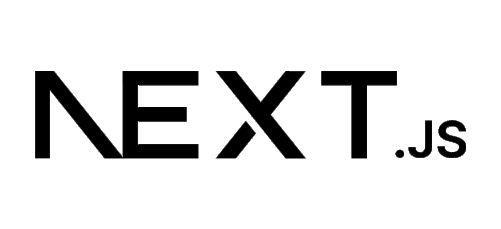
Next.js takes the first spot in the list of 16 React.js frameworks best for building server-rendered React applications. If you’re in search of a good framework to create a dynamic webpage with all the benefits of a statistically generated site, Next.js is what you need. It comes with automatic static optimization features to accommodate both frontend and backend development within a single framework. This dual-feature capability helps you create performant and modern websites and applications.
Features:
- Hot Reload lets the developer spot the changes that are made in the application without needing to reload the page.
- Code Split: Based on the libraries pages are rendered and only the required JavaScript functions that are needed to run are loaded.
- Automatic Routing feature helps every page directory become routed without the need for any extra setup.
| ✅ Advantages | ❎ Disadvantages |
|---|---|
| Provides data security | Not for beginners |
| Best for static sites | Requires a certain level of expertise |
| SEO optimization | Need extra setup and configuration for your application |
| Built-in CSS support | Lack of built-in state management |
| Fast server-side rendering | Fewer plugins available |
| Good for complex data fetching | Limited selection |
2. Gatsby.js
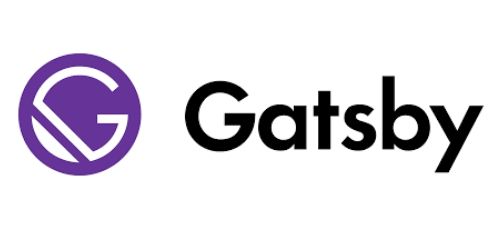
Gatsby.js is a similar framework to Next.js for building static site websites. It uses modern web technologies such as Webpack and GraphQL. Unlike, Next.js, it comes with full-fledged additional security measures so you don’t have to worry about security breaches. Furthermore, Gatsby helps in the creation of a modern website with security.
Features:
- Low Hosting Cost features let React.js developers host the website on a Content Delivery Network (CDN) without burning holes in your pocket.
- Load Data from Anywhere feature gives access to best-in-class services and maintains the workflow of the content.
- Code splitting features ensure necessary code is sent to improve performance and speed.
| ✅ Advantages | ❎ Disadvantages |
|---|---|
| Faster performance | Takes time to understand the platform |
| Modern workflow | Need to update content frequently |
| Multiple data sources and security | Not suitable for large sites |
| Offers supportive community | Low-quality plugins |
| Automatic deployment setup | Troubleshooting can be challenging due to high-level of default configurations |
| Vast library of plugins | 1-3 delay time |
3. Chakra UI:

Charka UI takes the third position in the list. It is an ideal choice for developers searching for frameworks that encompass accessibility, composition, keyboard, navigation, style, overrides, and more. Plus, gives developers the flexibility to design individual components with a great degree of customization.
Features:
- Style Component: Charka UI has been influenced by the Tailwind CSS palette that allows developers to access their favorite color to style.
- Responsive Style: This feature simplifies responsiveness by defining styles for different screen sizes in an object syntax.
- Stack Component: simplifies Charka UI CSS flex property with the simple ways to stack elements using Horizontal Stack (HStack) and Vertical Stack (VStack).
| ✅ Advantages | ❎ Disadvantages |
|---|---|
| Intuitive CSS-like and prop-based model | Easier for those who have a background in bulma CSS and Bootstrap |
| Dark and light mode compatible | Increased runtime due to CSS-in-JS Emotion + Styled System |
| Easy manipulation in CSS classes | Don’t have access to underlying elements |
| Override is easy | Need additional wrappers for configuring some component |
| More accessible to users with a disability | Not sufficient for large websites |
| Great community | |
| Flexible styles, quick and easy |
4. React Bootstrap
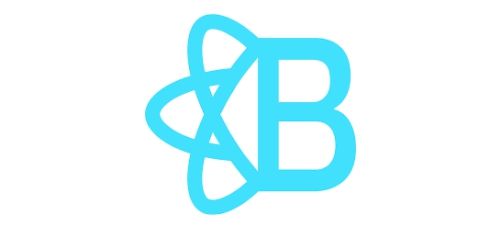
React Bootstrap is the oldest React.js framework in our list that comes with CSS compatibility features. If you’re in quest of a framework that works well with the hundreds of Bootstrap themes, React Bootstrap is definitely for you. Moreover, there is no requirement for Bootstrap.js and JQuery, when you use React Bootstrap. Developer can smoothly import individual components from the library. This speeds up the process and provides stability.
Features:
- Pre-built Components: It allows React.js developers to leverage the extensive pre-built components and styles that give a stunning look to your UI and responsive web application effortlessly.
- Reusable UI Component: It offers a collection of reusable UI components such as buttons, forms, modals, and navigation bars. Because of this, the effort of integration is less than zero in your front-end development project.
- Responsive Grid System: It smartly creates fluid layouts and rearranges them based on available screen space.
| ✅ Advantages | ❎ Disadvantages |
|---|---|
| Customized Bootstrap | Limited Functionality |
| CSS Support | Needs time to learn and adapt |
| Supports NPM and SAAS | Less flexibility in terms of customization |
| Excellent Documentation | |
| No dependencies on iQuery |
5. Blueprint UI

It is well-known for designing complex UI and data-driven web pages. It comes packed with a CSS library consisting of 30 components giving options for developers less coding and scripting. Its user-friendly and multi-touch UI makes it a powerhouse for efficient website and application development.
Features:
- Modular and Extensible UI: Complex web application becomes easier with the compressive library and extensible UI components building them. Its highly customizable design can easily integrate, which in return saves time and development effort.
- Improved data Visualization handles a large dataset that offers features like sorting and filtering, making it easier to build data-intensive applications with a user-friendly interface.
- Real-time composting improves the performance of the application of the user interface.
| ✅ Advantages | ❎ Disadvantages |
|---|---|
| Wide range of pre-built components | Its large size can impact load time |
| Support i18n | Limited simple design |
| Multi-language support | Lack of customization options |
| Responsive components | Steep learning curve |
| Offers data visualization components | May not be suitable for many projects |
| Consistent and elegant design | |
| Large community |
6. Ant Design
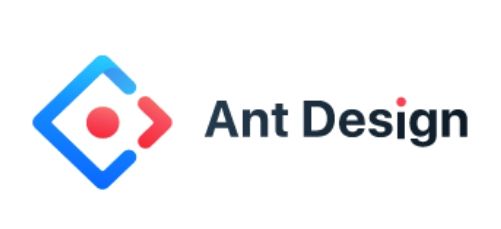
If you are in search of a good React UI for enterprise-level products, Ant Design makes an excellent choice. It offers high-quality components to build feature-rich interactive UI with various language support and customizable options tailored to meet the project requirements. Moreover, It also uses less.js for styling and includes buttons, icons, grids, breadcrumbs, drop-downs, pagination, and more.
Features:
- Comprehensive library offers component, icon, and pattern that sorts out every design-related issue.
- Third-party library support comes with data visualizations, maps, media queries, and infinite scroll that improves design capabilities.
- Extensive forms library provides users with extraordinary form handling experience.
| ✅ Advantages | ❎ Disadvantages |
|---|---|
| Developer friendly API | Its large size can impact load time |
| Offers powerful theme | Limited flexibility |
| Multi-language support | Limited community and ecosystem |
| Responsive components | |
| TypeScript Support |
7. React Redux
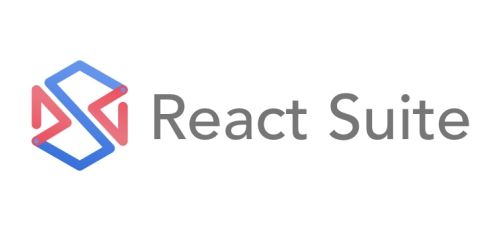
React Redux makes a prominent spot on the list of the top best React.js frameworks. It is one of the top UI for debugging applications among all the other frameworks in the list. It automatically applies performance optimization and UI re-renders the components after the major changes. Because of this, the design applications run at their full capacities.
Features:
- Time Travel Debugging: Tracking the state of the application becomes easy with this feature. At any given point, it can represent the entire state of the application, and error reports go to the server.
- Performance optimization: Removes unnecessary re-renders and ensures re-rendering only when the actual data changes.
- Pure Reducer Functions: A new object is returned from the reducer when data gets changed.
| ✅ Advantages | ❎ Disadvantages |
|---|---|
| Central state management system | Time-consuming |
| DevTools tracks state changes, logs, and error report | Implement new functionality requires writing several codes across various files each time |
| Stores long-term data | Not ideal for complex development projects |
| Automatic performance optimizations | Slower the performance |
| Great community | Not suitable for simple applications |
8. Material UI
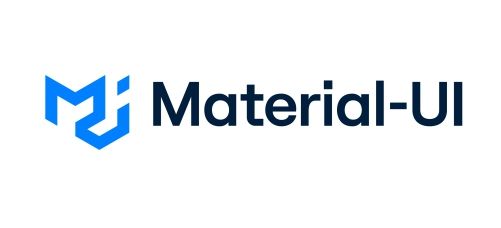
Material UI has all you need to design UI elements from navigation tools, sliders, drop-down menus, and pre-build components. Material UI abides by Google Material Design standards to ensure swiftness. Plus, it offers tools and APIs to assist native mobile app development.
Features:
- Interoperable with Styling System: This feature allows smooth styling to apply in your web components beyond what is provided by default.
- Customizable tools: Provides a large collection of customization tools and templates to tailor the design as per their needs and preferences.
- Regular Updates prevent bugs from the library and help to stay with the latest features and components.
| ✅ Advantages | ❎ Disadvantages |
|---|---|
| Many classes for individual HTML tags | Limit the effectiveness of branding |
| Dynamic theming system | Framerates are not compatible with every system |
| Great performance and reliability | Not beginner friendly |
| Many pre-style UI components | Limited enterprise-level component |
| Good for large websites and enterprise | Extensive use of animation can cause higher data usage |
| Mature community and robust documentation | Less flexible in terms of custom components |
| Three dimensional effect makes hierarchy and type of interaction easy | Development time is more |
9. React Admin
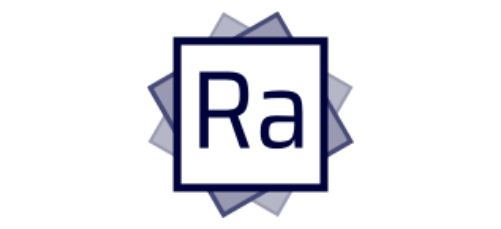
React Admin deserves a spot on our list without any question. React Admin UI component works out most favorably to build business-to-business (B2B) admin applications. If you’re on the hunt for a good admin application with a customizable design, React Admin is a top pick for you on the list. It comes with a free version and enterprise solution for its components that include Marmelab support.
Features:
- I18n feature translates the default interface message into more than 30 languages.
- Tree View provides a set of components that are easy to navigate and edit in any other hierarchical data.
- Search and Filtering rely on the intuitive API to provide a great user experience to simplify the search workflow.
| ✅ Advantages | ❎ Disadvantages |
|---|---|
| Less Code | Difficult to accommodate various business requests |
| Form Handling | Uses Redux and Redux-Saga for state management |
| Multi-language support | May lack the flexibility in certain business models |
| Editable data grid | |
| Morden design with security |
Read More: React.js vs. Next.js: Why businesses prefer Next.js over React.js?
10. Fluent UI
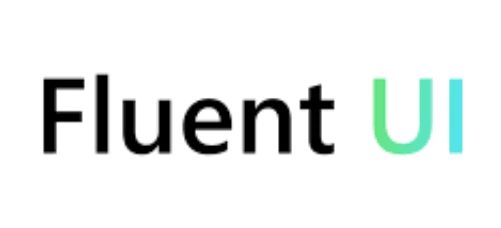
If you’re looking to leverage the React.js framework that aligns with your Microsoft design, Fluent UI works best for you. It is developed by Microsoft and shares similarities with Microsoft products. But unlike Material UI, it uses advanced navigation components that make it the ideal choice for React.js projects with complex navigation structures.
Features:
- Internationalization and Localization Support make it easier for React.js developers to build a user interface that is used for different languages and regions.
- Pre-built Components and Libraries are highly customizable Microsoft design helps developers build interfaces in a short span of time.
- Accessibility features support in-built screen readers, and keyboard navigations for users with disabilities.
| ✅ Advantages | ❎ Disadvantages |
|---|---|
| Vast library component | Not for beginners |
| Intuitive system | Not best for nonconventional UI |
| Cross-platform enterprise application | May increase file size |
| Accessibility | Take additional effort for non-Microsoft technologies |
| Default styling options | Lacks detailed documentation |
11. React Virtualized

If you’re looking to build heavy front-end data, React Virtualized is the smartest choice for you. Its components are designed to effectively render large lists, grid layouts, tabular data, dynamic resizing, direction sorters, window scrollers, and many more. On top of that libraries allow customizable tables that ensure the display meets the functional design requirement of the application. It’s known to have few dependencies and supports standard web browsers and mobile browsers.
Features:
- Grid and List Components help to showcase large data efficiently by using an adjustable virtualization engine.
- Customizable Styles and Themes help to match your brand aesthetics.
- Column and Row Resizing allows to resize of columns and rows within the grid and component to tailor the data layout as per the user’s needs.
| ✅ Advantages | ❎ Disadvantages |
|---|---|
| Limits the number of calls to render | Code Complexity |
| Reduces workload of web browsers | Row rendering makes the process low |
| Used for client-side and server-side rendering | Sometimes list gets very long |
| Supports different data formats and layouts | |
| Horizontal and vertical scrolling |
12. Grommet
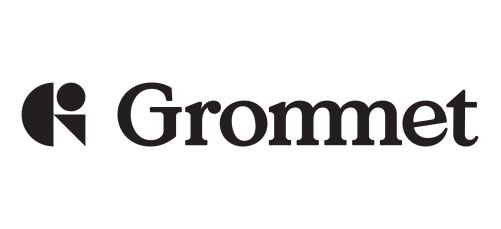
takes the spot of most iconic components in the list of the best 15 React.js frameworks to create intuitive mobile websites. It offers a board spectrum library to customize UI with utilities, media options, input visualization, layouts, and colors. Big companies like Boeing and Netflix have benefited from Grommet. One of the best things about Grommet is that you can integrate it into your existing project or create it from scratch with the advanced theme. And the flexible design layouts for larger screen displays are extra perks of Grommet.
Features:
- W3C’s spec Support feature is beneficial for users with disabilities.
- Powerful Themes and Tools allow easy customizations for color, component elements, layouts, and type as per project requirements.
| ✅ Advantages | ❎ Disadvantages |
|---|---|
| Supports Web Content Accessibility Guidelines (WCAG) | Theming system can be complex for man |
| Wide range of SVG icons library | Overwhelming for beginners |
| Lightweight and great for beginners | External CSS dependency complicates global style managing |
| User-friendly interface with pre-packaged themes | Heavyweight |
| Robust and bold component design | Lacks community support |
| Documentation support |
13. Onsen UI
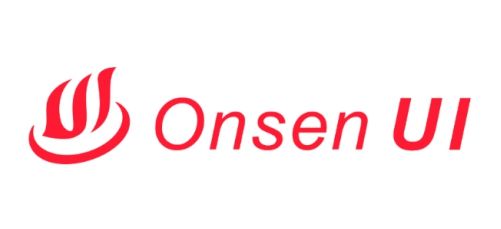
If you want to build cross-platform mobile apps, Onsen UI will align perfectly with the requirements. This framework is designed for mobile app development and supports iOS and Android. It uses JavaScript and HTML5 and provides smooth integrations with Angular, Vue.js, and React. All of its components are auto-style and compatible with other React.js frameworks.
Features:
- With Onsen UI you can develop apps with or without any JavaScript framework.
- Onsen UI has extra binding packages which makes its API simple to use with frameworks such as React, Vue, etc.
- Onsen UI is highly optimized for mobile devices, thus making it an app framework for mobile web app development.
| ✅ Advantages | ❎ Disadvantages |
|---|---|
| Responsive layout | Performance and compatibility issues |
| Mobile optimized | Small community |
| High-quality UI | Needs extensive customization for tablet apps |
| Flat design |
14. Vechai UI
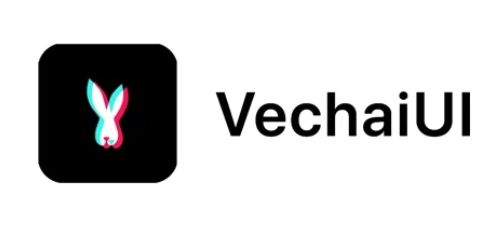
Vechai UI is the recently built React UI component library. if you’re looking to create quirky React apps with dynamic color, Vechai UI is the perfect match for you. Its library contains components for forms, data display, navigation, media, icons, notifications, and more. TypeScript and Tailwind CSS components will be the added benefits for the developers.
Features:
- Vechai UI is available with pre-designed Headless UI + Radix-UI components.
- It also comes with a set of React components.
- This framework is written in TypeScript.
- It offers built-in dark mode.
- It offers amazing theme customization options.
| ✅ Advantages | ❎ Disadvantages |
|---|---|
| Accessibility React component | Complex ligatures are not supported |
| Dark Mode | PDF of the shadow DOM is not supported |
| Powerful theme customization | |
| Pre-designed headlessui and radix-ui component |
15. KendoReact

KendoReact: If you want to create a fast and impressive UI, KendoReact is our top recommendation. It comes with a premium set of components with a whooping cost of $799. Microsoft, NASA, and Sony are the clients of KendoReact. To exclude KendoReact from the list would be a mistake. It lets you add the existing library from KendoReact without having to rewrite the whole library.
Features:
- KendoReact offers intuitive API
- It has compact npm packages and tree-shaking features that make sure that you only import what is needed. This leaves a small footprint and keeps your project lean.
- It is compatible with material design, Bootstrap, and Fluent design languages.
- It can be integrated with any existing design language.
| ✅ Advantages | ❎ Disadvantages |
|---|---|
| Integrates easily with the application | No right-to-left (RTL) support |
| Create apps faster | Large may not open in some viewers |
| Unlimited support | Textual content may not split across the pages |
| Comprehensive toolsets | PDF has a browser and system-specific limit |
16. React Router
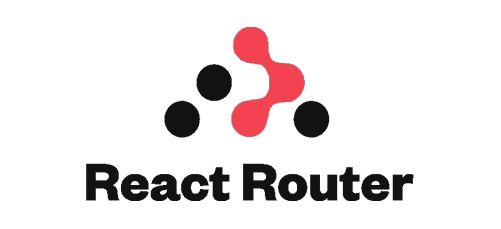
React Router this the last one on our list, so if you’re seeking to find a router UI to use together with another interface, this is surely the best for you. Its routing solution maps with your application component’s URLs and ensures a seamless delivery experience for users. Generally, the application needs to go through four layers of layout with different hierarchies. But React Router simplifies the process with automatic changes in your layout and URL. This is what sets apart the React Router among other frameworks in the list.
Features:
- Nested Interfaces feature allows multiple usage of interfaces within a single application.
- Optimized routing evaluates the best possibility route to render and rank the website.
- Declarative Programming Architecture helps developers to define and navigate in clear and component-based manner.
| ✅ Advantages | ❎ Disadvantages |
|---|---|
| Automatic features select best routes for your application | Not user friendly |
| Easily set up your own route ordering | Few alternatives in the market |
| Time saver | Textual content may not split across the pages |
| Speeds up application | PDF has a browser and system-specific limit |
![]()
GitHub Statistic
The table below shows the popularity statistics of React:
| Users Reactions | React |
|---|---|
| Popularity | 72.6% |
| Loved | 68.19% |
| Want | 22.57% |
![]()
What are the Advantages of React.js over Other Frameworks?
As we have already seen big companies are dependent on React.js. Here are some of the few reasons React is advantageous over other frameworks:
- Provides Code Stability: React.js uses a downward data flow that ensures code stability. This means the developer can easily make changes in the child structure without affecting the parent structure, which is the beauty of this data flow structure. Alongside, follows a well-defined API that makes a stable codebase over time.
- Suitable for Various Purposes: It significantly minimizes the cost and time of the web development journey. Its component-based architecture is a boon for complex UI interactions, such as real-time updates, drag-and-drop functionality, or complex forms.
- Maintain Code Organization: It can break down UI into smaller chunks and reusable components help in maintainability.
- SEO-Friendly Platform: It handles search engine setbacks effectively, making it an SEO-friendly platform. Fast rendering method reduces page load time while also adapting quick real-time performance.
- Offer Better Development: React.js is a powerhouse of component reusability, efficient rendering, hot reloading, developers tools, community support, and developer-friendly syntax that contributes to better development workflow and improves productivity.
Read More: NodeJS Frameworks for App Development
![]()
Final Thoughts
React.js framework offers diverse options each one is tailored to specific development. All of these frameworks have their pros and cons, the best one depends on your project-specific needs. Whether you prioritize server-side rendering, or looking for a superfast, UI design, or form handling, there’s a React framework ready to assist you. So with this, we have come to the end of the 16 Best React.js Frameworks in your development process that will not only elevate your project quality but also enhance productivity.
Take control of your career and land your dream job
sign up with us now and start applying for the best opportunities!
FAQs
Can I use React.js with other frameworks?
Yes, it can be integrated with other frameworks.
Why should I use React.js for my front-end development?
It is flexible and easy to maintain as compared to other frameworks and also helps reduce cost and effort.
Which React UI is lightning fast?
Material UI is the lightning-fast React UI framework.
Which CSS framework goes well with React?
Bootstrap and Material UI are two great CSS frameworks that work well with React.
Is React a UI framework or JavaScript?
React is not technically a UI framework, but it‘s a JavaScript library that lets developers reuse front-end components to build feature-rich UI.
What is the benefit of using Axios in React.js?
Axios in React.js makes the HTTP request easier and enables smooth communication between client and server.
What is the advantage of implementing redux in react.js?
It improves state management and effectively handles the complex state logic across components. Besides, it also provides a centralized store for application data.


